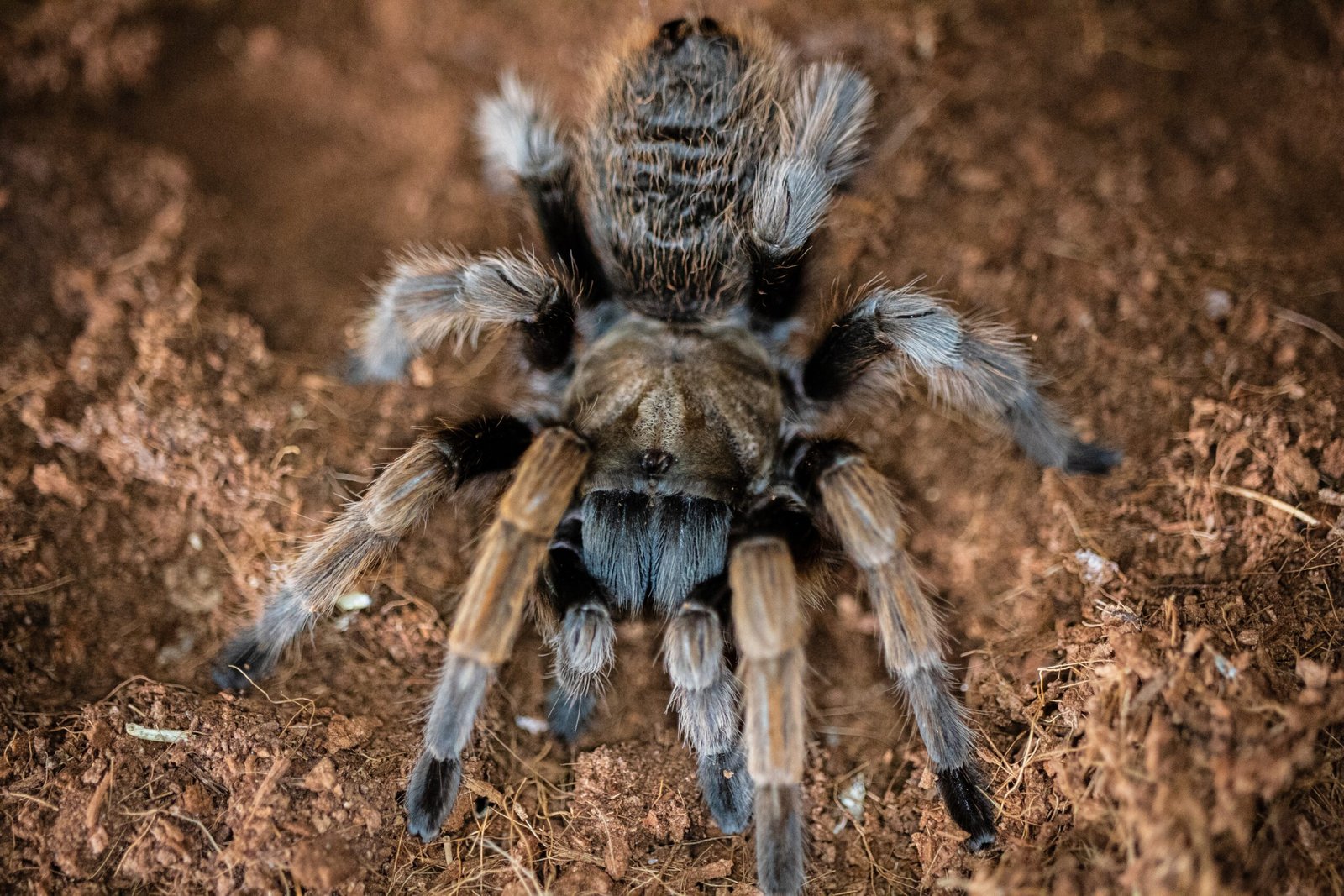Imagine a hidden world beneath the surface, where predators and prey engage in a constant battle for survival. In this intriguing realm, there exists a unique phenomenon – mammals digging into burrows to prey on tarantulas. Yes, you read that right! The question lingers: are there specific mammals with a remarkable penchant for hunting these eight-legged creatures? Join us on an adventure as we explore the depths of this fascinating topic, uncovering the secrets of these elusive hunters and their curious prey.

Overview of Tarantula Predation
Introduction to tarantula predation
Tarantula predation is an intriguing aspect of nature that involves mammals with specialized adaptations and behaviors targeting these formidable arachnids. While tarantulas are known for their unique defense mechanisms, including venomous bites and urticating hairs, certain mammalian predators have developed strategies to overcome these obstacles and successfully prey upon them.
Adaptations of tarantulas against predators
Tarantulas have evolved a range of adaptations to defend themselves against potential predators. Their venomous fangs deliver potent neurotoxins, ensuring that any predator that attempts to attack them will be met with severe consequences. Additionally, their urticating hairs provide a secondary line of defense by irritating the skin and eyes of potential threats. These combined attributes make tarantulas a formidable challenge for would-be predators.
Predation as a natural balance in ecosystems
Predation plays a vital role in maintaining a natural balance within ecosystems. By preying on tarantulas, mammals help regulate their populations, preventing unchecked growth that could have detrimental effects on other species in the ecosystem. This predation-driven control ensures that tarantula populations remain in balance with their environment, contributing to the overall health and functioning of the ecosystem.
Mammals as Tarantula Predators
Intriguing mammalian predators
Several mammals have developed intriguing predatory behaviors and adaptations that allow them to target and prey upon tarantulas. These mammals have evolved over time to exploit the feeding opportunities provided by these arachnids, making them an important part of the ecosystem dynamics in regions where tarantulas are found.
Role of mammals in tarantula predation
Mammals play a significant role in tarantula predation by actively hunting and consuming these spiders. Through their specialized adaptations and behaviors, these mammals have developed the ability to overcome the defense mechanisms of tarantulas and effectively prey upon them, contributing to the regulation of tarantula populations.
Adaptive behaviors and physical characteristics
The mammals that prey on tarantulas have developed unique adaptive behaviors and physical characteristics to aid in their hunting success. These adaptations range from keen senses that allow them to detect burrows hiding tarantulas to specialized limbs or tools for burrow excavation. With a combination of these traits, these mammals have honed their ability to target and capture tarantulas, ensuring a steady food source for themselves.
Burrowing Mammals: A Specialized Approach
Introduction to burrowing mammals
Burrowing mammals, including badgers, coyotes, foxes, skunks, and raccoons, have adopted a specialized approach to tarantula predation. These mammals have the ability to excavate burrows and access tarantula dens, allowing them to efficiently prey upon these spiders within their own habitats.
Behavioral adaptations for burrowing
Burrowing mammals exhibit various behavioral adaptations that aid in their ability to access tarantula burrows. They may spend considerable time patiently digging or utilize their natural instincts to detect hidden entrances. By adopting these specialized behaviors, burrowing mammals increase their chances of successfully encountering tarantulas within their burrows.
Physical adaptations for burrowing
The physical adaptations of burrowing mammals are crucial for their success in accessing tarantula burrows. These adaptations may include strong forelimbs and claws for digging, powerful jaws for excavation, and specialized auditory or olfactory systems that allow them to locate hidden burrows. These physical adaptations facilitate the efficient exploitation of tarantula resources within subterranean habitats.
Mammals That Dig Into Burrows to Prey on Tarantulas
Overview of tarantula-specific mammalian predators
Certain mammals have specifically evolved to prey on tarantulas, often utilizing burrowing behavior as a key strategy for accessing their prey. These mammals have developed a close relationship with tarantulas, relying on them as a significant food source and carving out a unique niche in their local ecosystems.
Interaction between burrowing mammals and tarantulas
The interaction between burrowing mammals and tarantulas is a fascinating example of a predator-prey relationship. While tarantulas possess various defensive mechanisms, such as venomous bites and urticating hairs, burrowing mammals have evolved strategies to overcome these defenses and successfully prey upon tarantulas within their burrows.
Examples of mammal species known for this behavior
Several mammal species are known for their burrowing behavior and predation on tarantulas. These include badgers, coyotes, foxes, skunks, and raccoons. Each of these species has distinctive traits and techniques for accessing tarantula burrows and capturing their prey, highlighting the diversity and adaptability of mammals in tarantula predation.

1. Badgers
Behavior and habits
Badgers are nocturnal and primarily solitary mammals known for their exceptional digging abilities. They employ their strong forelimbs and sharp claws to excavate burrows and access tarantula dens. With their keen sense of smell, badgers can detect tarantulas by following their scent trails.
Dietary preferences
While badgers have a diverse diet, they have a particular fondness for tarantulas. Tarantulas provide a rich source of protein and nutrients, making them an essential component of a badger’s diet. By actively preying on tarantulas, badgers contribute to regulating local tarantula populations.
Burrow excavation techniques
Badgers employ impressive burrow excavation techniques to create their own dens and access tarantula burrows. They can dig extensive networks of tunnels, often reaching several feet deep. Their prowess in burrow excavation ensures that they can effectively locate and prey upon tarantulas within their underground lairs.
2. Coyotes
Predatory behavior towards tarantulas
Coyotes are highly adaptable predators known for their opportunistic feeding habits. While they primarily feed on small mammals and invertebrates, they have been observed preying upon tarantulas whenever the opportunity arises. They exploit the entrances of tarantula burrows to launch swift attacks on unsuspecting spiders.
Burrow accessibility and hunting strategies
Coyotes take advantage of their agility and nimbleness to access tarantula burrows. With their slender bodies and flexible limbs, they can squeeze into narrow openings, allowing them to enter the spider’s underground habitat. Once inside, they employ lightning-quick hunting strategies to capture tarantulas.
Importance of tarantulas in coyote diet
While tarantulas may not make up a significant portion of a coyote’s diet, they still play an essential role. Tarantulas provide an additional food source that helps sustain coyotes in environments where other prey species may be scarce or less accessible. By including tarantulas in their diet, coyotes optimize their chances of survival in unpredictable ecosystems.

3. Foxes
Fox species and their relationship with tarantulas
Various fox species, including gray foxes and kit foxes, have established a relationship with tarantulas. These foxes have adapted their hunting strategies to target tarantulas within their burrows, taking advantage of a readily available food source within their habitats.
Burrow utilization and hunting techniques
Foxes utilize tarantula burrows for shelter and prey upon tarantulas as part of their diet. They are agile and quick, allowing them to navigate tight spaces and exploit any opportunity to capture tarantulas. Their keen senses of hearing and smell aid in detecting occupied burrows and locating the hidden spiders.
Implications for local ecosystem dynamics
The presence of foxes and their predation on tarantulas can have significant implications for local ecosystem dynamics. By regulating tarantula populations, foxes help maintain a balance within the ecosystem, preventing unchecked growth that could disrupt the delicate relationships between various species.
4. Skunks
Unique feeding habits on tarantulas
Skunks are known for their unique feeding habits, which include preying upon tarantulas. Skunks possess sharp teeth and powerful jaws that allow them to tackle tarantulas with ease. They are capable of overpowering tarantulas and consuming them as part of their diet.
Influence of burrowing behavior on hunting success
Skunks, with their burrowing behavior, gain an advantage in hunting tarantulas. They can actively excavate and access tarantula dens, increasing their chances of encountering these spiders. This specialized hunting strategy enables skunks to capitalize on the abundant tarantula resources within their habitats.
Beneficial aspects of tarantula control
While tarantulas play crucial roles in ecosystems, skunk predation can help regulate their populations. By preying upon tarantulas, skunks contribute to maintaining a balance in the ecosystem, ensuring the survival of other species dependent on this delicate equilibrium.

5. Raccoons
Adaptations for tarantula predation
Raccoons possess a range of adaptations that aid in their ability to prey upon tarantulas. Their dexterous forepaws, equipped with sharp claws, enable them to excavate burrows and extract tarantulas. With their ability to manipulate objects, raccoons can overcome the defenses of tarantulas and ensure a successful kill.
Burrow excavation methods and prey extraction
Raccoons rely on their well-developed motor skills to excavate tarantula burrows. Their agile forelimbs, combined with their keen intelligence, allow them to quickly and effectively access tarantula dens. Once inside, they use their nimble paws to extract and consume the captured spiders.
Impact of raccoon predation on tarantula populations
Raccoon predation has an impact on tarantula populations, contributing to their control and overall population dynamics. By preying upon tarantulas, raccoons help regulate their numbers, preventing unchecked growth that could negatively affect the ecosystem. The balance achieved through raccoon predation ensures a stable tarantula population within the local habitat.
Additional Mammals Involved in Tarantula Predation
Other mammalian species exhibiting burrow excavation behavior
In addition to badgers, coyotes, foxes, skunks, and raccoons, other mammalian species also exhibit burrow excavation behavior as part of their tarantula predation strategies. These species may include certain types of weasels, ground squirrels, and even some small carnivores. The ability to access tarantula burrows broadens the pool of potential predators and highlights the adaptability of mammals in exploiting this ecological niche.
Ecological implications and predator-prey dynamics
The involvement of multiple mammalian species in tarantula predation highlights the complexity of predator-prey dynamics in ecosystems. Each species contributes to the regulation of tarantula populations in its own unique way, resulting in a delicate balance that supports the overall health and biodiversity of the ecosystem.
Future research directions
There is still much to learn about the roles and ecological impacts of mammalian predators in tarantula predation. Further research is needed to explore the intricacies of these predator-prey relationships and the specific adaptations that enable mammals to successfully prey upon tarantulas. Additionally, studying the long-term effects of tarantula predation on ecosystem dynamics and the potential consequences of altered predator populations would provide valuable insights into the functioning of these complex systems.
In conclusion, the predation of tarantulas by mammals demonstrates the fascinating adaptations and behaviors that have evolved over time. Burrowing mammals, such as badgers, coyotes, foxes, skunks, and raccoons, exhibit specialized approaches to tarantula predation, utilizing their unique traits to access and capture these spiders within their burrows. This natural balance between predators and tarantulas contributes to a healthy ecosystem and underscores the intricate interplay between species in nature. Further research on these predator-prey relationships will undoubtedly shed more light on the complexity of tarantula predation and its ecological implications.

